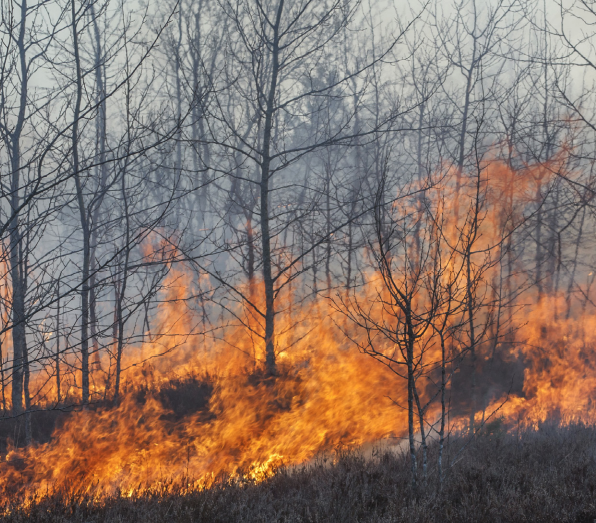Weather worries: the future of Europe depends on how it manages the risks of climate extremes

Why the EU should worry about the weather
Geo-political power shifts, uncertain economic development, migration, populism, BREXIT – Europe lives in tumultuous times with multiple challenges. In 2017, President Juncker started a debate on the Future of Europe: What future do we want for ourselves, for our children and for our European Union? A White Paper mapped out the drivers of change in the next decade, presenting a range of scenarios for how Europe could evolve by 2025.
This PLACARD policy brief* is based on a foresight workshop which was held from 11-12 December 2018 in Brussels. Upsides and downsides, challenges and response actions were discussed for 3 of the 5 scenarios from the EU White Paper on the Future of Europe and three climate cases (floods, heat waves and droughts, and storm surges).
*Download the full brief from the right-hand column.
Five different future scenarios for the EU
The White Paper on the Future of Europe – Reflections and scenarios for the EU27 by 2025 (EC, 2017) highlighted five scenarios for Europe by 2025:
- Carrying on:The EU27 focuses on delivering its positive reform agenda
- Nothing but the single market:The EU27 is gradually re-centred on the single market
- Those who want more do more:Willing Member States do more together in specific areas
- Doing less more efficiently:A focus on delivering more faster in selected areas, doing less elsewhere
- Doing much more together:Member States decide to do much more together across all policy areas
The emphasis is on the choices to be made to shape the unavoidable transformation of the Union rather than to be carried with them. That same year, three European think tanks emphasised that climate change should be one of the key challenges that need to be addressed in this process. These focused mainly on mitigation: the challenges posed by the energy transition required to meet the goals of the Paris Agreement, of which the EU was one of the main driving forces. However, even if the goals of Paris would be achieved, and even more so when these goals would not be achieved, Europe’s future will be affected by both slow-onset climatic changes but also by the changing occurrence of extreme weather events.
The frequency and scope of extreme weather events is projected to increase and may increasingly exceed the capabilities of individual EU member states to save lives and limit economic damage.
In recent years, large scale floods, freak storms, heatwaves and scorching droughts have already affected large parts of Europe. Their frequency and scope is projected to increase and may increasingly exceed the capabilities of individual Member States to save lives and limit economic damage.
Choices about the future of the European Union have upsides and downsides for climate risks
At first sight, a scenario in which Member States do much more together would offer the best opportunities to enhance future resilience and manage climate risks. Existing mechanisms like the Union Civil Protection Mechanism and the EU Strategy on Adaptation to Climate Change along with their supporting implementation mechanisms like knowledge networks, pooled resources and solidarity-based funding schemes could readily be strengthened. The EU’s position in international climate negotiations would be bolstered. However, such a scenario also has the pitfalls of over-regulation, sluggish coordination and a mismatch between the slow development of formal guidelines and frameworks on the EU level versus the needs of fast decision-making to address urgent climate risks at local and regional levels. Expansion of the EU may further dilute or slow down CCA and DRR response capabilities.
A scenario in which the EU re-centers its focus on the single market could lead to innovative market-driven solutions to climate risks boosted by an increasing role for the private sector.
In a scenario in which the EU re-centers its focus on the single market, much less coordination and cooperation can be expected in prevention, preparedness, response and recovery, and increased inequality between regions can be expected. However, this scenario may also lead to innovative market-driven solutions to climate risks, boosted by an increasing role for the private sector, including but not limited to financial instruments like in the insurance business.
In a scenario in which a limited number of Member States with similar challenges enhance their collaboration on climate risks (“coalitions of the willing”), there would be a greater disparity in the rate of development between Member States with regards to science, economy and security and differences in the willingness to act. But Member States facing similar issues can move faster in developing solutions without waiting for other Member States to move at the same speed. This can lead to a tailored approach, with efficient and prompt response capabilities related to specific needs and innovations. Other Member States would have the opportunity of joining over time.
Finally, in a scenario in which the EU does less but more efficiently, future climate resilience will depend on the selection of CCA and DRR as one of the priority areas.
The EU’s future is unknown. How can the EU manage extreme weather risks under this uncertainty?
- Not only from a governance, but also from a climate perspective, the EU will look completely differently in a few decades. The current EU Strategy on Adaptation to Climate Change and the Union Civil Protection Mechanism require strengthening to effectively address the increasing risks posed by different possible EU futures.
- It is recommended that DG CLIMA guidance on developing adaptation strategies and DG ECHO advice on Risk Assessment are updated, taking into account the results of foresight work.
- The forward-looking approaches used in foresight should be showcased for all relevant actors, in order to help them to prepare for the range of possible futures across Europe.
- Advances that have been made in sharing of data, knowledge and good practice can be sustained, but also weakened or even nullified, depending on the direction the EU takes. Therefore, specific guarantees with effective institutional and financial support have to be developed both at the EU level and between Member States, in order to sustain or enhance existing mechanisms and ensure resilience in an uncertain future.
- There is a need for the continued building of a CCA and DRR expert community that should be at least partially independent from EU funding.
- Collaboration and cooperation between actors across administrative borders should be strengthened and agreement on logistics, legislation, distribution of resources between the EU and MS actors pursued.

Related resources
- Read more about the PLACARD project
- Read the workshop summary: The future of Europe depends on how it manages the risks of climate extremes
- Read the White paper on the future of Europe and the way forward
- Read a related report by IEEP and E3G: The future of Europe and the future of climate action
- Read about foresight for policy & decision-makers
(0) Comments
There is no content